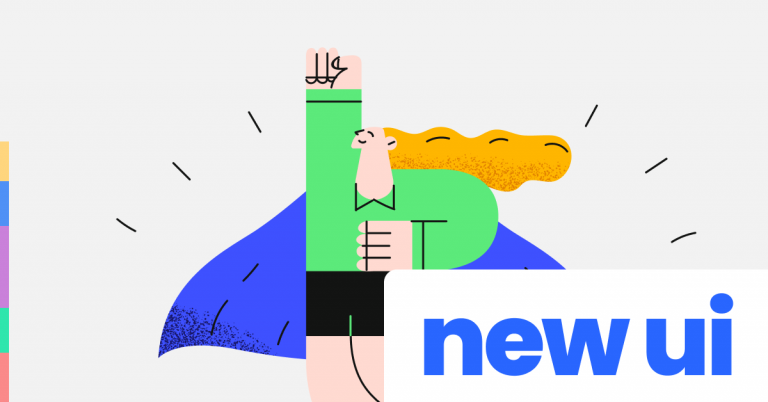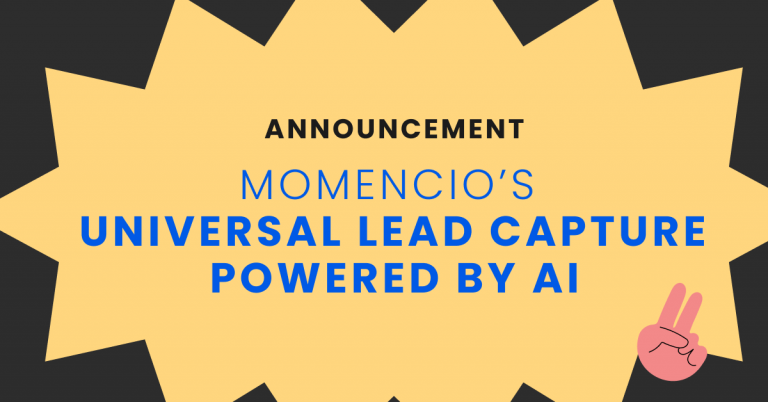Quantity vs. quality leads. It’s the age-old debate in marketing, in sales, in just about everything. More leads, more clicks, more business cards stuffed into a pocket. It feels productive. Like progress. But is it?
The truth is, most leads are just noise. Distractions dressed up as opportunities. A crowded booth, a long email list, a spreadsheet full of names—none of it matters if they don’t turn into something real.
Quality, on the other hand, is quiet. It’s the conversation that lingers, the handshake that means something. It’s the prospect who already understands what you do and is ready to listen. It’s the person who won’t waste your time, and more importantly, you won’t waste theirs.
But here’s the problem: trade shows are designed for quantity. They celebrate the loud, the flashy, the mass collection of “contacts.” They reward volume. And if you follow that path, you end up with a pile of maybes, of sort-of-interested, of polite smiles and forgotten follow-ups.
So what if we did it differently? What if trade shows weren’t about grabbing every single lead, but about finding the right ones? What if instead of chasing numbers, we focused on connection?
That’s what this is about. Five strategies to filter out the noise. To attract, qualify, and convert the leads that matter. The ones that turn into business. The ones that actually make trade shows worth it.
It’s not about doing more. It’s about doing it better.
Strategy 1: pre-event targeting to attract high-quality attendees
Most people show up at a trade show hoping for luck. They set up their booth, put on a smile, and wait for the right leads to find them. But luck is a terrible strategy.
The real work starts before the event. Long before the first handshake.
High-quality leads don’t just wander into your booth by accident. They need a reason to be there. They need to know you exist, and they need to believe that stopping by your booth is worth their time.
So, the first step? Don’t wait for them. Go find them.
Define exactly who you want to meet. Not just industry types or job titles—go deeper. What problem are they trying to solve? What are they looking for at this event? What words do they use when they describe their struggle? The better you understand them, the easier it is to attract them.
Then, start the conversation before the event even begins. Use email, social media, and industry forums to get on their radar. Not with spam. Not with desperate invitations. But with something useful. A tip, an insight, a piece of content that speaks directly to their pain point.
Make it easy for them to say yes. Offer a reason to stop by your booth. A product demo that solves a specific challenge. A short consultation. A chance to skip the generic sales pitch and get right to what matters.
Because the best leads don’t just happen. They are created. And it starts before the event doors even open.
Strategy 2: optimize your trade show booth for lead qualification
A trade show booth isn’t just a space. It’s a filter. It can either attract the right people or let in everyone. And when everyone walks in, no one really matters.
Most booths are built for attention. Bright colors. Free giveaways. A gimmick to pull people in. But attention isn’t the goal—qualification is.
Instead of designing a booth to be popular, design it to be useful. Make it work like a lead-scoring system in real time. Here’s how:
- Clarify your message. If your booth signage is vague or generic, you’ll attract vague and generic leads. Be direct. What do you do? Who is it for? Why should they care? The right people should see your booth and immediately think, “That’s for me.”
- Use engagement as a filter. Not all interactions are equal. A free pen doesn’t qualify a lead, but a product demo does. A quick chat about the weather is forgettable, but a conversation about their biggest business challenge is valuable. Make engagement meaningful.
- Train your team to disqualify. Most booth staff focus on collecting as many contacts as possible. Flip the mindset. Instead of asking, “Can I get your info?” ask, “Are we the right fit for you?” A confident team knows that saying no to the wrong lead is just as important as saying yes to the right one.
- Use technology to separate curiosity from commitment. Lead capture tools, badge scanning, and real-time CRM integration can help sort leads immediately. Someone who watches a demo and scans their badge? High intent. Someone who just grabbed a stress ball? Probably not.
A booth isn’t successful because it’s busy. It’s successful because it attracts, qualifies, and prioritizes the right leads.
If your booth looks fun but your pipeline looks empty, it’s time to rethink the strategy.
Strategy 3: real-time engagement and lead qualification at the event
A trade show isn’t a waiting game. The best leads don’t just walk up, introduce themselves, and ask how they can buy. That’s a dream, not a strategy.
Every moment at the event is an opportunity to engage, to qualify, to separate the serious from the curious. The trick is knowing how to do it in real time, without wasting time.
Here’s how to turn every interaction into a decision-making moment:
- Ask better questions. Skip the small talk. Instead of “How’s the event going?” try “What’s the biggest challenge you’re looking to solve this year?” A good question shifts the focus from browsing to problem-solving.
- Use the rule of three. If a lead answers three high-value questions—about budget, timeline, and needs—they’re worth a follow-up. If they can’t answer even one, they’re probably not ready. Move on.
- Let them interact, not just listen. A demo is worth more than a pitch. Let them try, explore, experience. The more involved they are, the more likely they are to remember—and buy.
- Watch their body language. Someone leaning in, asking follow-up questions, or taking notes is engaged. Someone checking their phone or looking around? Probably just being polite.
- Know when to let go. Not every interaction needs a long conversation. If they’re not a fit, give them something valuable (a quick insight, a resource, a referral) and move on.
Real-time engagement isn’t about collecting names. It’s about qualifying fast, deepening the right conversations, and walking away with leads that actually matter.

Strategy 4: post-event follow-up and lead nurturing
The trade show is over. The booths are packed up. The energy has faded. And now comes the part where most businesses fail—not because they don’t follow up, but because they follow up the wrong way.
Most follow-ups look like this:
- A generic, automated email that says, “Thanks for stopping by our booth! Let us know if you have any questions.”
- A one-size-fits-all sales pitch that lands in inboxes already flooded with post-event noise
- Radio silence for weeks, then a sudden out-of-the-blue sales call that gets ignored
This is how leads die.
Trade shows aren’t just about the leads you collect—they’re about the relationships you build after. If you wait too long or sound like everyone else, you become background noise. But if you follow up with precision and intention, you turn those fleeting conversations into real business opportunities.
So how do you do it right?
Follow up fast—but not carelessly
Timing matters. Research shows that leads are 21 times more likely to convert when contacted within the first 24 to 48 hours. After that, interest fades, competitors reach out, and the connection weakens.
But speed without strategy is just noise. The goal isn’t just to follow up quickly—it’s to follow up with something meaningful.
Instead of sending a generic email, personalize it. Reference the conversation. Mention something specific—an insight they shared, a challenge they described, a product they seemed interested in. Let them know this isn’t just another mass email.
Segment your leads before you engage
Not every lead deserves the same follow-up. Some are hot and ready for a next step. Others need time. Some were just browsing and won’t be a fit at all.
Segmenting leads helps you prioritize. Here’s a simple way to categorize them:
- Sales-ready leads – they showed strong intent, asked buying questions, and fit your ideal customer profile. These need immediate follow-up, a demo, or a proposal.
- Marketing-qualified leads – they were interested but not ready. Maybe they need more education or internal approval. These need nurturing—valuable content, targeted follow-ups, and check-ins over time.
- Low-priority leads – they stopped by out of curiosity but weren’t a real fit. These leads shouldn’t take up too much of your time, but they can still receive occasional updates.
The mistake most companies make? They treat all leads the same. And when you do that, you risk losing the ones that actually matter.
Add value before you ask for anything
Nobody wants to be sold to immediately. But they do want solutions. Instead of following up with, “Are you ready to buy?” try:
- Sending a relevant case study that speaks to their industry
- Sharing a free tool, report, or insight related to their challenge
- Introducing them to someone in your network who could help them
- Inviting them to an exclusive post-event webinar or Q&A session
The best follow-ups feel like a natural continuation of the conversation—not a sales trap.
Don’t rely on just one channel
Most companies send a single follow-up email, then give up. But not everyone checks email. Some respond better to a LinkedIn message. Others prefer a call. Some might engage more with retargeted ads or a direct mail piece.
A good follow-up strategy includes multiple touchpoints:
- An email within 24-48 hours
- A LinkedIn connection request with a short message
- A personalized video or voice message for high-value leads
- A follow-up call for the most engaged prospects
- A well-timed piece of content that keeps them thinking about you
The key is persistence without being pushy.
Track, measure, and refine
How do you know if your follow-up strategy is working? Track it.
- What percentage of leads respond?
- How many move to the next step?
- Which follow-up methods work best?
If response rates are low, test different messaging. If leads aren’t converting, revisit your segmentation. The best companies don’t just follow up—they refine their process based on what works.
Trade show success isn’t just about what happens at the event. It’s about what happens after.
If you treat follow-up as an afterthought, expect your leads to do the same.
Strategy 5: measuring success and optimizing for better results
Most companies judge a trade show by one metric: the number of leads collected. It’s the easiest number to track, but also the least useful.
A full spreadsheet doesn’t mean a full pipeline.
The real measure of success isn’t how many leads you collect—it’s how many turn into actual business. If you don’t know that number, you don’t know if your trade show strategy is working.
Here’s how to measure what actually matters.
Define success before the event starts
If your only goal is “get more leads,” you’ve already lost. Set clear, meaningful objectives before the event:
- How many qualified leads do you need to make the event worth it?
- What percentage of leads should move to the next step in the sales funnel?
- What revenue do you expect to generate from this event over the next six months?
If you don’t set targets, you can’t optimize.
Track lead quality, not just lead quantity
A stack of business cards means nothing if they don’t convert. Instead, track:
- Conversion rate – what percentage of leads move forward?
- Sales cycle length – do trade show leads close faster or slower than other leads?
- Average deal size – are these leads worth the investment?
- Follow-up engagement – how many respond to your outreach?
The best way to measure lead quality? Look at how many turn into real conversations.
Use technology to connect the dots
Most trade show leads disappear into a black hole. They get scanned, put into a CRM, and then… nothing.
Avoid this by integrating your lead capture tools with your CRM and marketing automation. This allows you to:
- See which leads actually engage after the event
- Track how they move through the sales funnel
- Automate follow-ups based on lead behavior
Without this, you’re just guessing.
Optimize for the next event
Every trade show is an experiment. The best teams analyze results and adjust.
- Did you attract the right people? If not, adjust your pre-show marketing.
- Did leads engage with follow-ups? If not, refine your messaging.
- Did conversations convert into business? If not, rethink your qualification process.
Trade shows aren’t just about showing up. They’re about learning, improving, and making the next one even better.
Because the real goal isn’t to collect leads. It’s to build a system that turns them into revenue.
Conclusion
Most companies go to trade shows thinking about volume. More leads. More scans. More business cards in a fishbowl.
But more is not the goal. Better is.
The difference between a successful event and a wasted one isn’t how many people stopped by your booth. It’s how many of the right people engaged, moved forward, and eventually became customers.
That’s why these five strategies matter:
- Pre-event targeting ensures you attract the right people before the show even starts.
- Booth optimization turns your space into a filter, qualifying the right leads and letting the wrong ones go.
- Real-time engagement makes sure your team isn’t just collecting names but starting real conversations.
- Post-event follow-up turns fleeting interest into long-term business.
- Measuring success ensures you don’t repeat the same mistakes at your next event.
Trade shows aren’t about collecting. They’re about connecting.
When you focus on quality over quantity, you stop wasting time on the wrong leads, and you start building relationships with the ones who actually matter.
Because at the end of the day, the goal isn’t to leave a trade show with a hundred names. It’s to leave with real opportunities—the ones that turn into deals, growth, and lasting business.
Make every trade show lead count
Trade shows aren’t just an event. They’re an investment. An investment in time, effort, and money. And like any investment, the goal isn’t activity—it’s results.
The companies that win aren’t the ones who collect the most leads. They’re the ones who know what to do with them.
momencio helps you bridge that gap.
- Capture and qualify leads instantly, without the guesswork.
- Automate personalized follow-ups that turn interest into action.
- Track engagement in real time, so no lead gets lost in the black hole.
You’ve already done the hard part—getting the right people to your booth. Now, make sure they don’t slip away.
Book a demo with momencio today and see how smarter lead management turns trade shows into real revenue.
Interesting facts from research
- On average, it takes approximately 3.5 sales calls to close a lead generated at a trade show. This underscores the importance of persistence and a structured follow-up process.
- Converting a trade show lead is 38% less expensive than relying on sales calls alone. This highlights the cost-effectiveness of engaging leads obtained through trade shows.
- For those who put in the effort and follow up, 5 to 10% of trade show leads can convert. Effective follow-up strategies can significantly impact conversion rates.
FAQs
- What makes a lead high-quality at a trade show?
- A high-quality lead is someone who not only shows interest but also fits your ideal customer profile. They have a clear need for your product or service, the authority to make a purchasing decision, and a timeline for taking action. A good lead asks relevant questions, engages in meaningful conversation, and expresses a specific business challenge that your solution can address.
- How do I balance lead quantity and quality at trade shows?
- Instead of focusing on collecting as many leads as possible, implement strategies that attract and filter for the right people. Pre-event marketing can target specific attendees, while real-time qualification techniques—like asking the right questions, using lead scoring, and segmenting visitors—ensure that your team prioritizes those most likely to convert.
- What are the best tools for lead qualification at events?
- The best tools help you capture, assess, and organize leads efficiently. Badge scanners, lead retrieval apps, and CRM integrations allow you to collect data instantly. AI-driven scoring tools can rank leads based on engagement levels, while marketing automation platforms ensure personalized follow-ups based on lead behavior.
- How quickly should I follow up after a trade show?
- Follow up within 24 to 48 hours while the conversation is still fresh. Research shows that the sooner you engage with a lead, the higher the chance of conversion. A personalized email, LinkedIn message, or even a quick phone call referencing your discussion can set you apart from competitors.
- What’s the best way to measure event lead success?
- Success isn’t just about the number of leads collected—it’s about how many turn into real business. Track key performance indicators such as lead-to-opportunity conversion rate, sales cycle length, average deal size, and engagement with follow-up emails. By analyzing these metrics, you can refine your strategy for future trade shows and ensure higher ROI.







